From the Archives: 1987 portraits highlight L.A.’s homeless plight
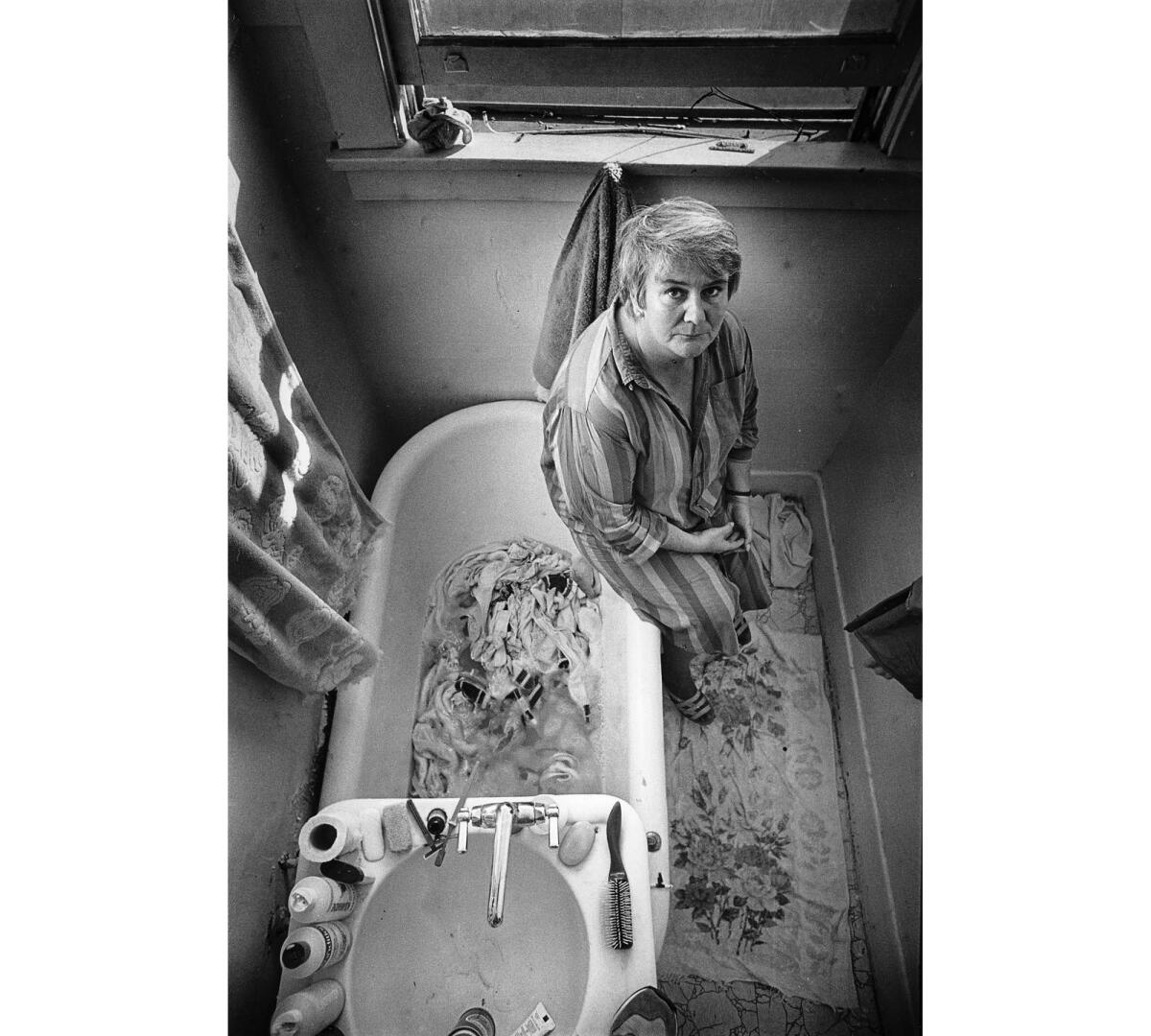
- Share via
On Jan. 25, 1987, a series of portraits of homeless people by Lacy Atkins appeared in the Los Angeles Times. The portraits accompanied a series of profiles by staff writer Garry Abrams. Outtakes from Abrams’ article are below each portrait.
The full article is online: For the Homeless in L.A., Survival Can Be a Full-Time Job: Quests for Shelter, Struggles to Find Food Fill Their Days; Fear of Crime Often Fills Their Nights.
Kate Livingston
Livingston and her 15-year-old son, Christopher, spent their first homeless night in a restaurant. “I kept telling them I was waiting for my husband, who was in an all-night poker game,” she recalled. At first light, muttering insults against all unpunctual men, the 46-year-old divorced woman and her son pushed out into the unknown.
They have been homeless for about a year, Livingston said. Until she was laid off her $1,250-a-month job taking telephone orders at an electronics firm, the two lived in a $550-a-month, one-bedroom apartment in Culver City. She now receives $249 a month in welfare.
Before they moved to the Harbor Interfaith Shelter in San Pedro seven weeks ago, Livingston said she and her son had lived most of the year at a Santa Monica shelter, where she was an unpaid worker. She never imagined that she would be homeless. ...
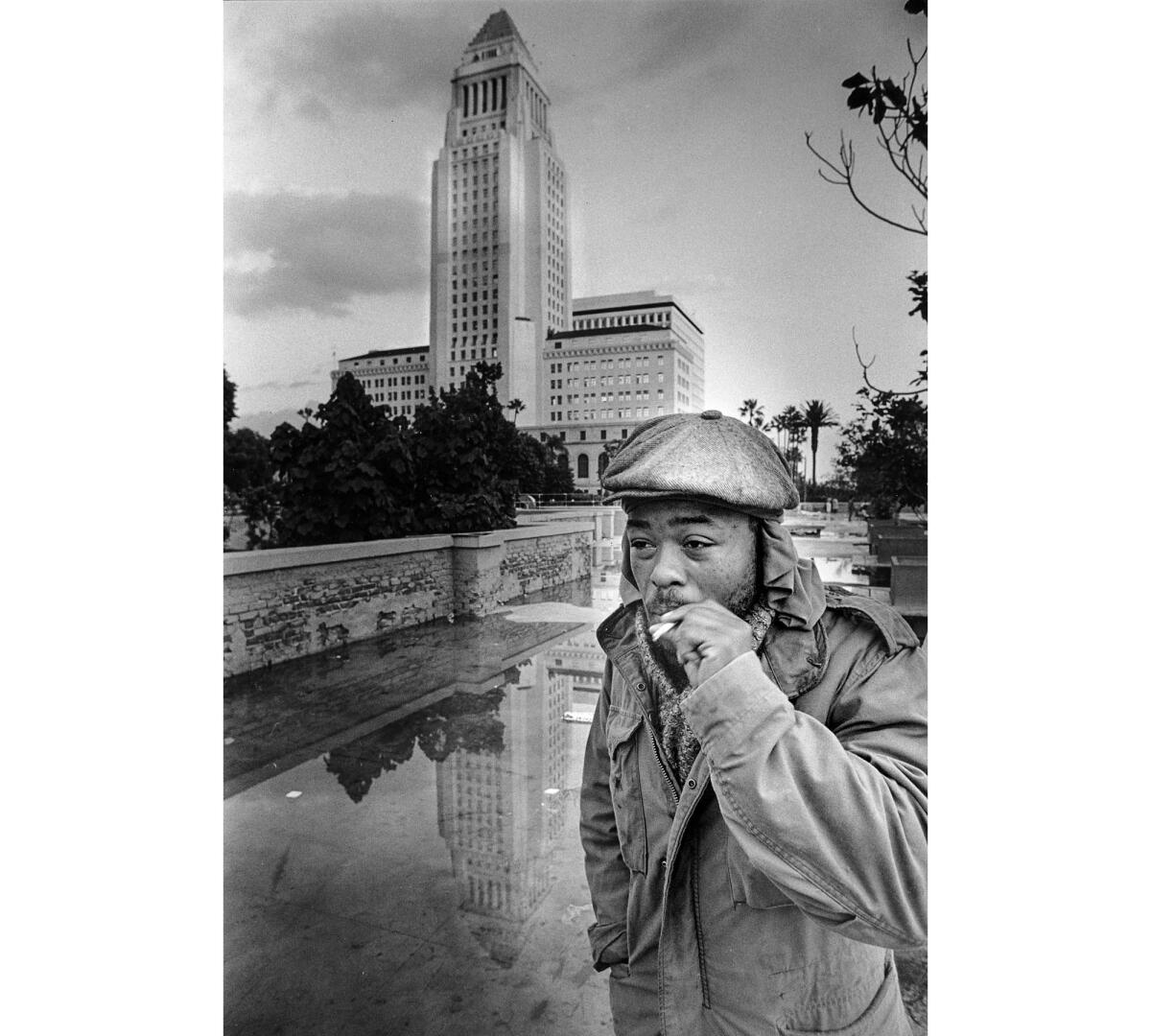
Paul Robinson
A Chicago native, Robinson, 33, said he has been in Los Angeles about 4 1/2 years and has been homeless for about a year. He was one of two persons arrested and briefly jailed along with homeless organizer Ted Hayes when Tent City, a homeless protest camp in downtown Los Angeles, was disbanded after the New Year’s holiday.
Robinson figures he is homeless because “I kind of choose to stay out here to some degree, but to some degree, I’ve been forced out here.” Explaining that he quit his job as a hotel desk clerk “out of frustration, really,” he added, “I was frustrated because I used my income on wine. I wasn’t going nowhere. It seemed like I never could have money working at that job, so I took to the streets.” ...
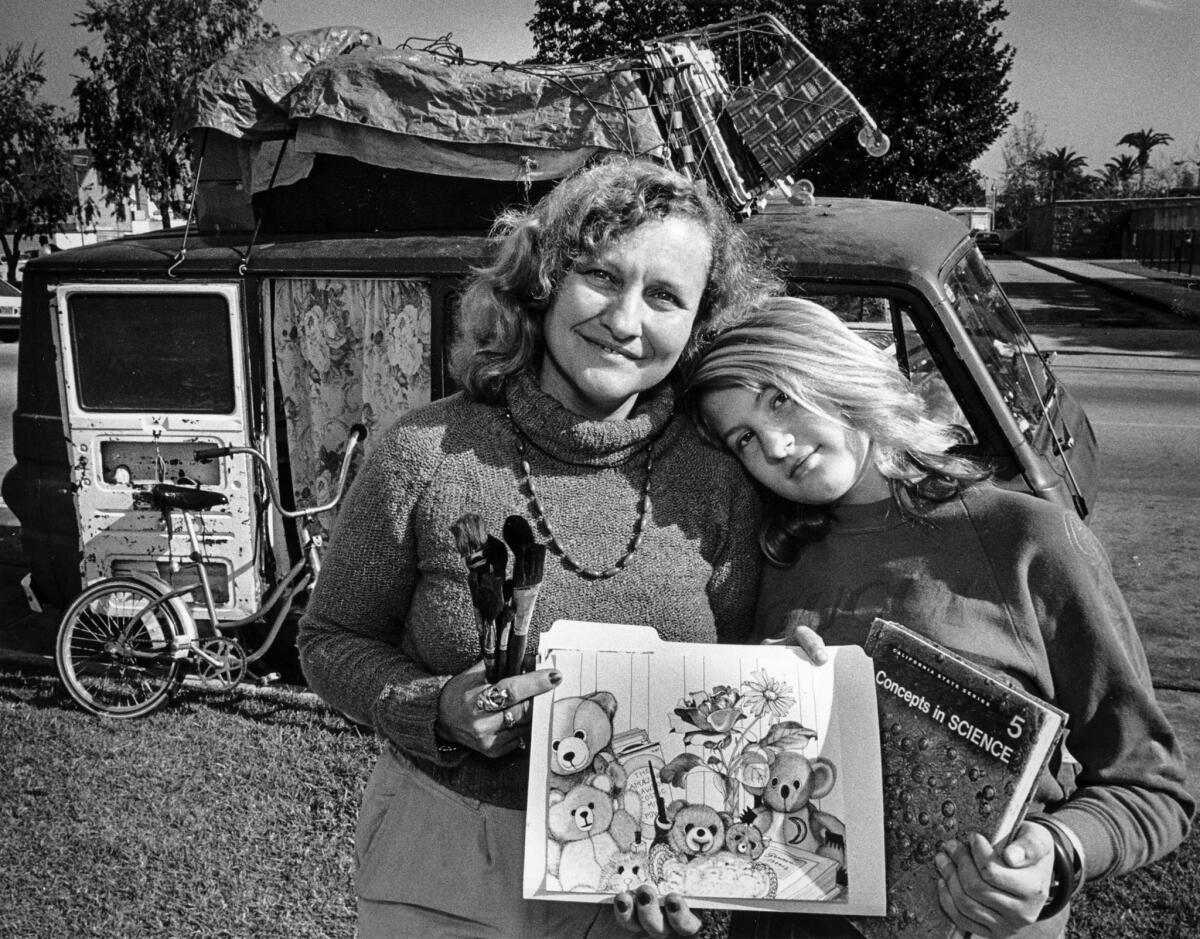
Geneva Reese
The Reeses, who live in a van, left Phoenix a little more than a year ago. Since then, Geneva Reese said, she has been trying to sell her art in the Southern California area — without much success. Over the New Year’s holiday, the mother and daughter migrated from Orange County to Pasadena. Reese blamed hassles with the police and a generally unfriendly atmosphere for the departure. But she also said such problems probably are inevitable anywhere.
“When my daughter was born, the dream of my life was to fix up an RV [recreational vehicle] or a van or a camper or something and tour the country, doing artwork as I went and just seeing parts of this country I’ve never had a chance to see,” Reese said. “At that time, a lot of people were doing things like that, and it was accepted. Now people aren’t travelers anymore if they’re touring the country. If they don’t have a lot of money, they’re transients. It’s become a new dirty word.” ...
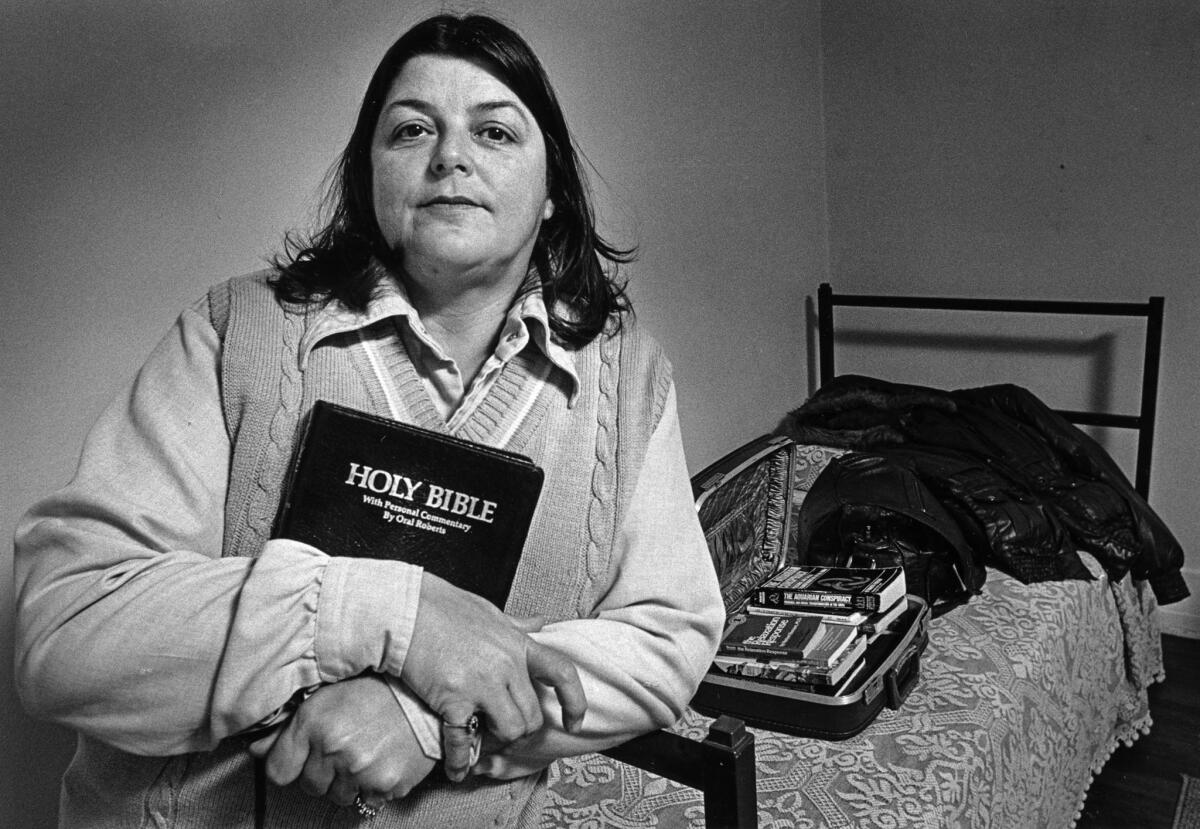
Elizabeth Presley
Presley, 46 and a native of Memphis, Tenn., has lived in Southern California since 1971. She has been homeless for about two years. Although she is currently in a downtown shelter, Presley said she has spent most of that time on the streets. She declined to say where she sleeps, but caseworkers at the Inner City Law Center said she has generally found shelter in a mini-storage rental facility. A cheerful woman whose religious faith apparently sustains her, Presley said her only income is from infrequent day jobs such as cleaning houses. She no longer can work as a nurse’s aide, she said, because arthritis has sapped her ability to stay on her feet. ...

Derrick McClendon
Derrick and Janice McClendon came to Los Angeles with their three daughters, Carmello, 4 months; Sonora, 15 months; and Lakretia, 7, from Michigan about two years ago in search of work. For about a year, the family had a one-bedroom apartment in Hollywood while McClendon had a job that paid $5 per hour. He was laid off eight months ago. ...
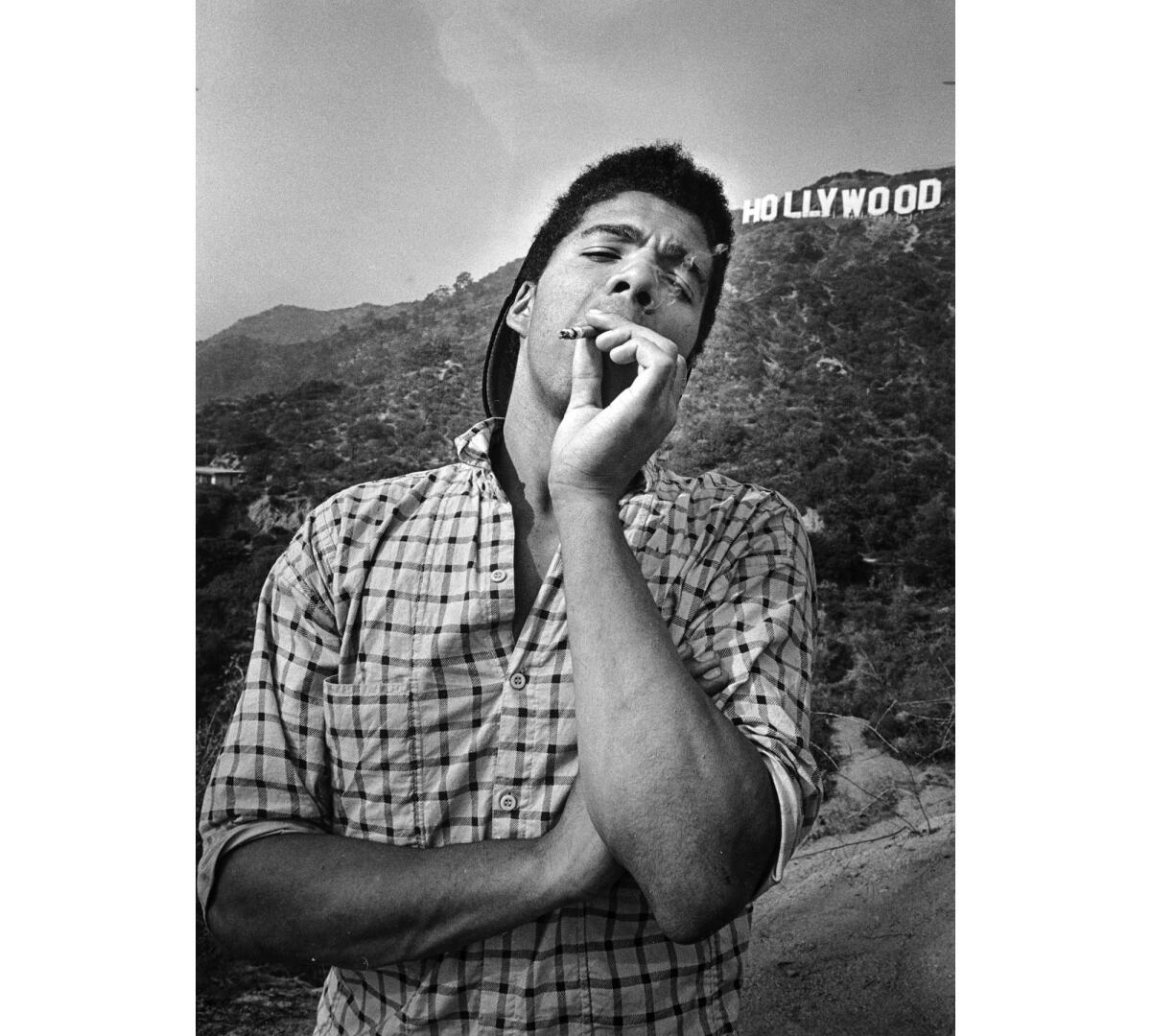
Robbie, 16
Robbie and Kim are among 20 juveniles in a new program — Project Homeless Youth, operated by the Los Angeles Youth Network — for the runaways who descend on Hollywood by the hundreds, perhaps thousands. Project workers say the program provides multiple services, including shelter, to young people who, as one worker put it, are “homeless with a skateboard or a suitcase full of [music] tapes.” ...
Robbie hitchhiked to Los Angeles from Philadelphia. He has been here only a few weeks. “My mother and father left me when I was only about 8, and my sister took care of me,” he said. While he was away from his sister’s home one day, Robbie said, she moved without leaving word where she had gone, and he decided to come to California. …
(The image of Kim is missing from the archives.)
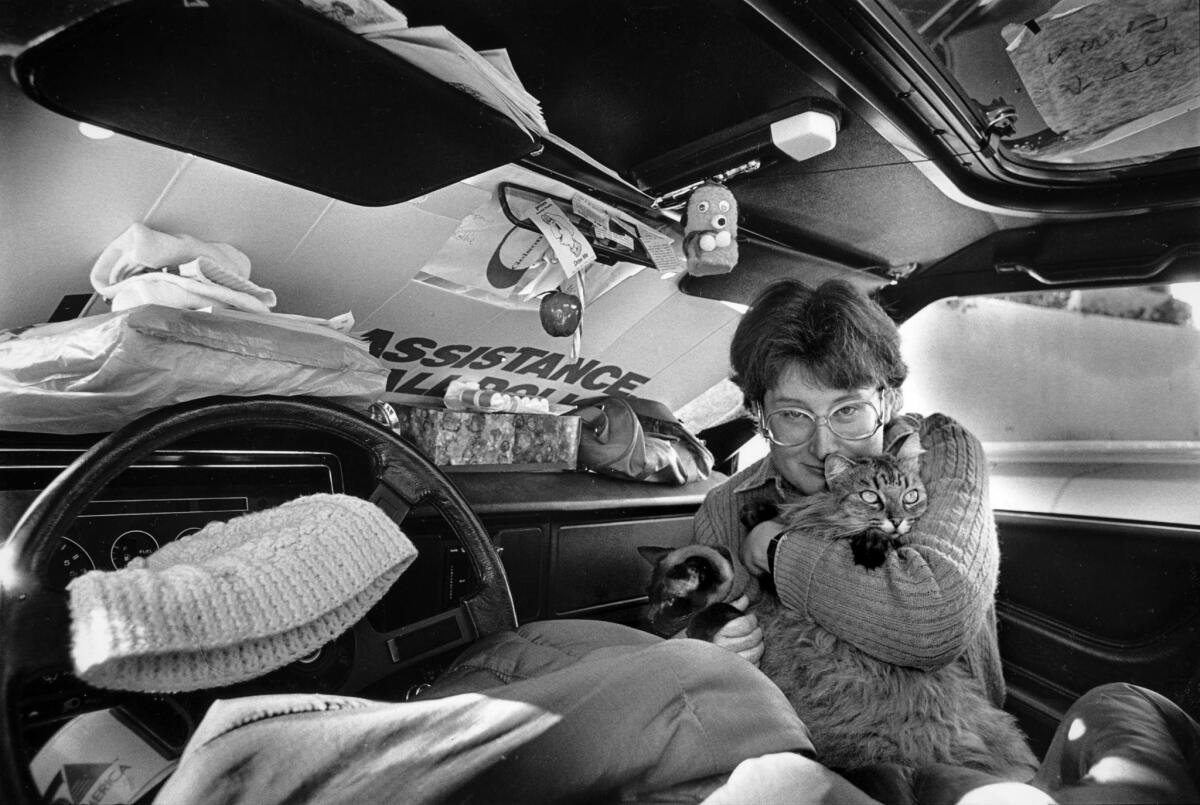
Debbie Robinson
Robinson, 32, lives in her 1982 Ford EXP in the parking lot of an Encino discount store. The car’s windows are blocked with plastic and cardboard. She shares the cramped interior with her two cats, Mollie and Kalayaan. The car has Ohio license plates, but Robinson said she came to Los Angeles a few months ago from Seattle, where she lost her job. Robinson dotes on her pets and said that she has taken them to a veterinarian when they needed medical attention. ...

Thomas Gist
Formerly of Detroit and Phoenix, Gist, 47, has lived on the streets of Los Angeles since quitting drugs and alcohol nearly two years ago, he said. Currently staying in a downtown shelter, Gist said he is a loner when he is on the street.
“I was on drugs and alcohol for 20 years, and I’ve got some behavior that’s not normal,” he explained. “I have fear attacks, anxiety attacks. I don’t talk to people. I’m anti-social, I guess. If somebody gets too close, I move. It’s really kind of simple.” ...
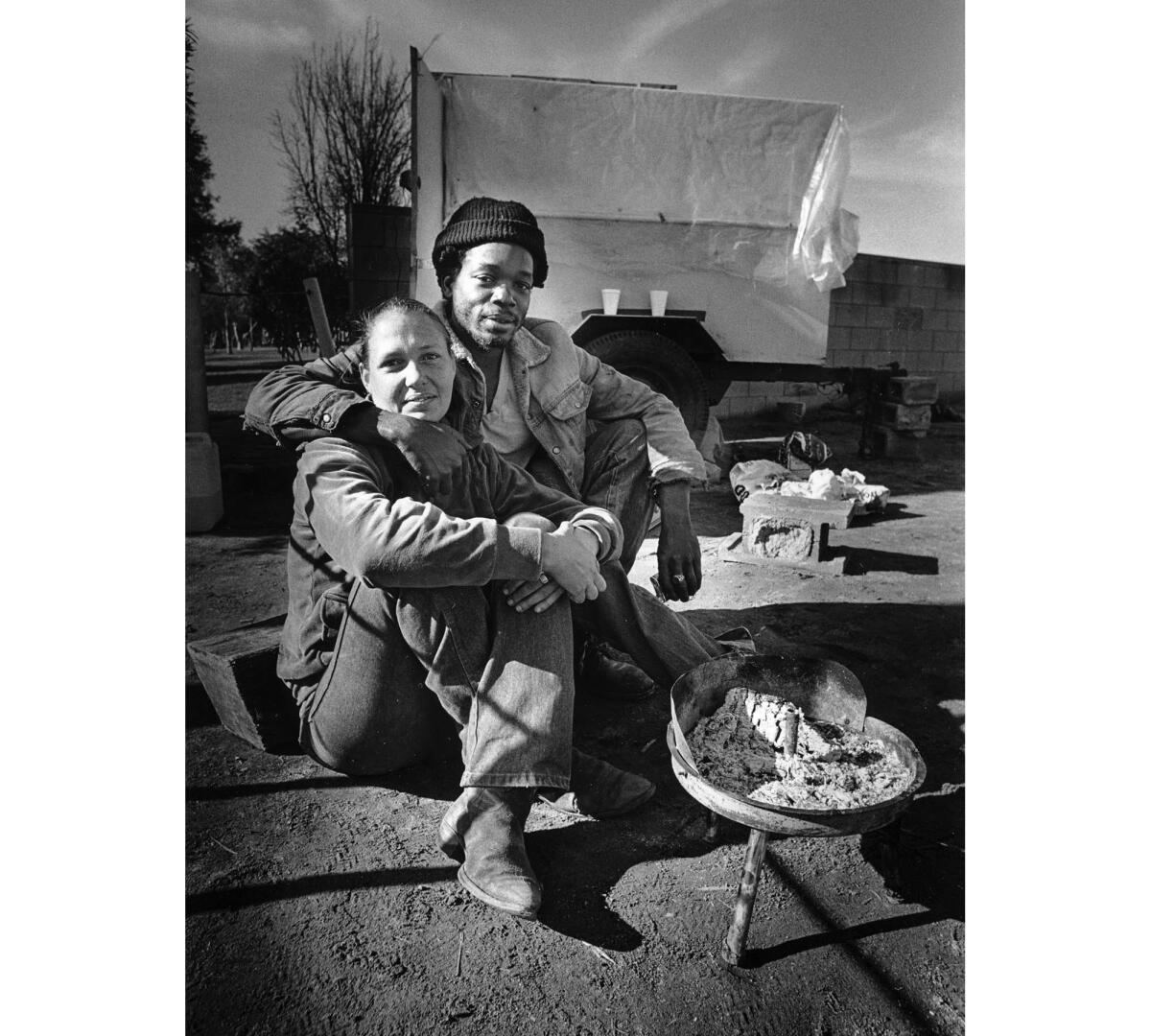
Jimmy Harris and Karen Davis
Harris, 29, and Davis, 42, live out of a 3-foot-by-5-foot trailer parked near an entrance to Hansen Dam Park in the San Fernando Valley. They have been in the park area about three months, they said.
The two said they plan to marry next month and hope to tie the knot in Las Vegas. But, Davis admitted ruefully, they may have to settle for less.
A native of Tyler, Texas, Davis said she has been in the Los Angeles area 26 years. She has not had a regular job for about a year, she added. Harris said that he had been out of work for about six months and that when he was working, he often had to choose between food and shelter. ...

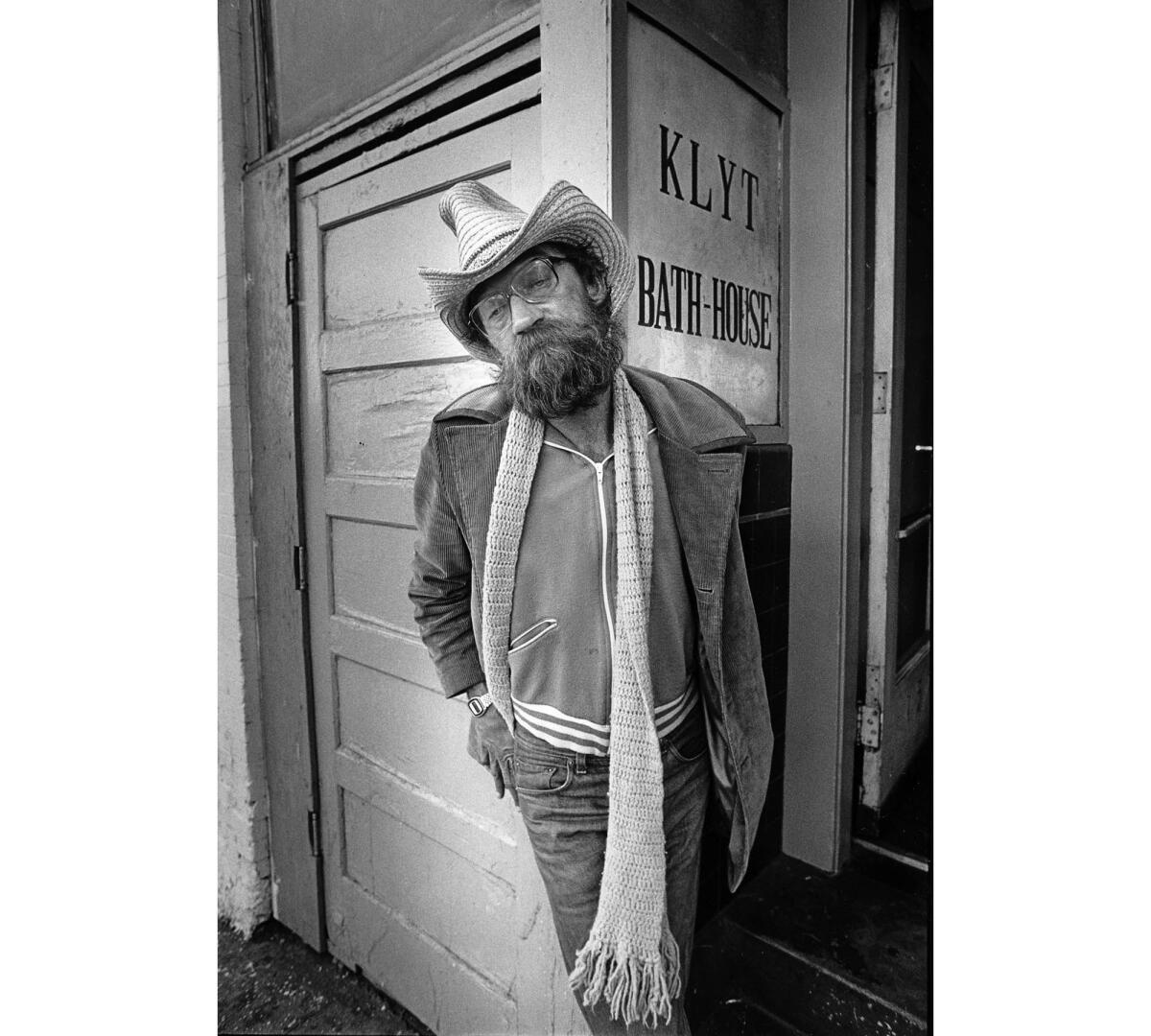
Bryan Harrison and Jerry Nichols
Bryan Harrison, 50, and Jerry Nichols, 46, inhabit the streets of downtown Los Angeles. Harrison, who has been homeless for more than two years, said he is an alcoholic. Throughout an interview, he sipped wine from a plastic bottle. Nichols, who said he is a homosexual and a longtime drug addict, has been “rambling for 20 years.”
His life on the street, Harrison said, has been “pure agonizing hell. Every day and every night, about every hour, my life is in danger. I’ve been beaten up so many times it’s not funny. My first three weeks on the street, I was beaten up three times. Also, I’m a drinker — an alcoholic — and one thing I try not to do is ever get real drunk and stagger and collapse on the street. I would be dead if I did that.” …
Nichols was more upbeat in describing his circumstances. He’s homeless partly because “I had a real bad drug habit, anything I could put in a needle, anything I could eat, swallow, shoot or snort,” Nichols said. “After you do something like that, nobody wants to give you a job. You might as well be an alcoholic brain surgeon. I handle the streets a lot better than Tennessee does. To me, they’re still funny. When they cease being funny, I’m going to have to do something. You see the damnedest things. When I was walking up here, there was a guy over there changing clothes, naked as a jaybird. If you want to let things depress you and get you down, the quickest way in the world to do it is to live on the streets. I would rather laugh.” ...
The biggest entertainment stories
Get our big stories about Hollywood, film, television, music, arts, culture and more right in your inbox as soon as they publish.
You may occasionally receive promotional content from the Los Angeles Times.







